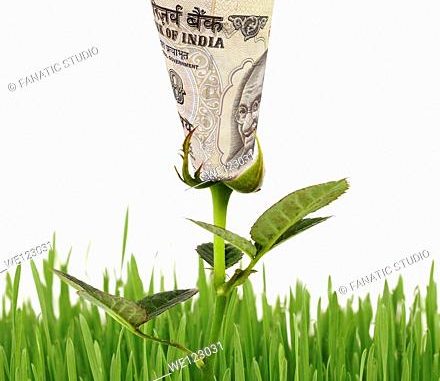
It is high time to include farmers into the national growth story and accelerate our efforts towards doubling their income. If nation achieve this goal, we’ll create history. The agricultural sector which contributes about 17% to India’s GDP and employs nearly 50% of the workforce, will give the much needed shot in the arm for the Indian economy to become one of the world’s top three economies.
Agroforestry is neither new nor unique. A few hundred years ago Indian farmers practised agroforestry very successfully, making us a rich nation that everyone wanted to trade with. Agroforestry, a science that promoted polyculture with a variety of trees, shrubs, bushes, herbs, kept soil fertile and water plentiful and allowed economics and ecology to benefit from each other in complementary ways. ‘Sustainability’ was a way of life. If we bring back this practice to our farmers, we can spark a new revolution in the agricultural sector and the Indian economy.
Rally for Rivers, launched by Sadhguru, founder of Isha Foundation, in 2017, and recommended by Niti Aayog for implementation across India, offers a well defined road map for farmers to successfully switch partially to agroforestry to address the multiple challenges they face. These include deteriorating soil quality, inadequate water resources, untenable irrigation practices, poor quality crop, fluctuating markets and crippling debt. The agroforestry solution offered by Rally for Rivers promotes crop cultivation taking into account regional agro-climatic conditions, soil health, market demand and availability of alternative irrigation practices. It promotes polyculture so that the farmer is able to harvest high-value crop with a healthy profit. And there is a huge domestic market for agroforestry products, especially timber products. Many states including Maharashtra, Odisha, Jharkhand, Uttarakhand and Karnataka are actively implementing this policy.
A study released by International Union of Forest Research Organizations in 2016 reported that India is the third largest importer of illegally logged timber in the world. And it doesn’t come cheap. Between 2010 and 2018, India imported Rs 388 billion worth of wood and wood products from around the world. A World Bank study says this market is expected to grow at 20% every year for the next few years. It makes economic-and-ecologic sense for the Indian farmer to tap into this market. Why do we want to import illegally logged timber when we can simply allow our farmers to grow them on their farms and buy from them? It will have a huge positive impact on the foreign exchange. These trees will act as insurance during exigencies for the farmer, reducing dependence on high interest loans that he is unable to repay driving him into debt and death.
Towards this objective, Cauvery Calling is a large scale demonstrable model that offers a visionary approach to our soil and water crisis through agroforestry. Cauvery’s flow has depleted nearly 40% over five decades and the Cauvery basin has lost 87% of it’s original green cover, severely depleting soil health and turning nearly 3 million acres of fertile soil fallow. Who has borne the brunt of this ecological disaster? The Indian farmer, ofcourse. Over 47 thousand farmers have committed suicide in the Cauvery basin in a little more than a decade. Cauvery calling offers them an alternative that works on every level- for their economics, the ecology, the states’ and country’s economy and for community health. By planting high-value trees on a portion of their farmland along woth their existing crop, farmers will have a lucrative additional source of income. They will also put back the trees in the right place at the right time. The only place where we can put back trees lost in the Cauvery basin, is on farmlands.
Unless farmers can earn from such an activity, why would they want to plant trees? It is ludicrous to expect a farmer- who can barely save himself- to save Cauvery. Hence Cauvery Calling promotes agroforestry as an economic plan with a prfound ecological impact addressing soil health, water sequestration, farmer economics and biodiversity revival all in one go. It’s time for all of us to step up to the plate and ensure we hear and respond to the call of Cauvery and the nation’s farmers who feed 1.3 billion people. This will set an example that ‘profitability’ is not the enemy of ecology- rather environmentalism has to become profitable for both to be sustainable. Agroforestry offers this opportunity.
It is imperative for all stakeholders to join in the Rally for Rivers initiative that promotes agroforestry solution to save our rivers. but Cauvery Calling is just the beginning and we need such several projects to kick-start in all parts of the country if indeed we are serious about sustainability and ecological balance. These would be holistic solutions that lead to inclusive growth.
Matter referenced:
Kiran Mazumdar Shaw, Times of India, Ahmedabad, Wednesday, 11th December, 2019.
By: Dr. Bhawana Asnani.
Happy to see Reviews, Additions, Suggestions and Comments, further.

Great content! Super high-quality! Keep it up!